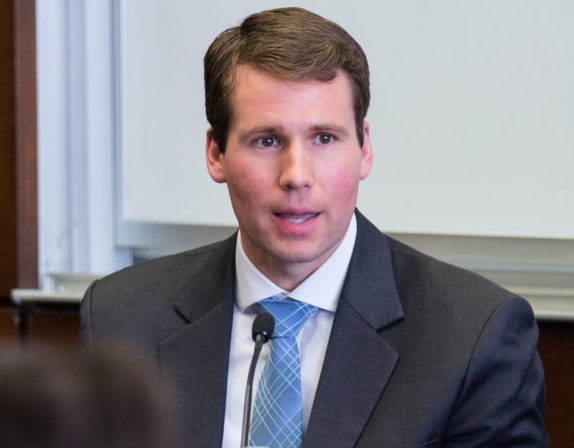
Regulatory priorities and strategies are likely to hold constant in the near future.
As The Regulatory Review celebrates its five-year anniversary, what will the regulatory world look like during the next five years? More acrimony, legal and political battles, debate about the role of the White House Office of Information and Regulatory Affairs (OIRA)? Yes to all, regardless of which party occupies the White House in 2017.
Given the reality that Democrats are overwhelmingly favored to retain the White House next year, it is perhaps more appropriate to talk about the future of regulation through that lens. Yet, the failure of political prognostication lately has made fools out of virtually everyone in the process.
In the immediate future (the remainder of 2016), President Barack Obama will continue to put the finishing touches on his regulatory legacy, publishing long-delayed measures. As of this writing, the Occupational Health and Safety Administration has just published its rule on silica exposure, a priority for public health groups and unions. The Administration also recently finalized the controversial “conflict of interest” or fiduciary rule for investment advisers, which was proposed initially in 2010 and re-proposed in 2015. Finally, expect the U.S. Environmental Protection Agency to put the final touches on rules curbing greenhouse gas emissions from fracking and heavy-duty trucks by the summer or fall.
These rules do not mean President Obama will accomplish everything on his ambitious agenda. The Administration likely will not have time to finish additional methane rules or regulate greenhouse gas emissions from refineries or agriculture—two other major sources. Those tasks will likely be left to the next Democratic administration.
What can we expect in 2017 and beyond? Given the current battles over income inequality and the nation’s broken immigration system, it is probably safe to predict those areas will receive increased attention in the future. President Obama has already publicly tried to fill some of the gaps through policies he could not accomplish on the legislative front. Immigration executive orders—now under Supreme Court review—and extensions to minimum wage protections for government contractors are two examples. If any branch of Congress remains in Republican control in the near future, expect the “Pen and Phone” approach to immigration reform and income inequality to continue, at least absent Supreme Court action.
If Hillary Clinton becomes President, expect a major push on renewable energy—perhaps even an unprecedented effort. She has pledged a 700 percent increase in solar power by 2020. Solar capacity would need to rise from roughly 20 gigawatts to approximately 140 gigawatts. This would likely require 50 percent more land area than the state of Rhode Island occupies. Such an expansion in solar capacity would probably require congressional action, but more regulation of coal and natural gas could make solar a more attractive option within the next few years.
If U.S. Senator Bernie Sanders (D-Vt.) becomes President, renewables will also be an agenda item, in addition to what appears to be a third round of Corporate Average Fuel Economy standards for cars and light-duty trucks. The current standard is 54.5 miles per gallon by 2025; any platform that calls for a 40 percent overall reduction in greenhouse gas emissions by 2030 will heavily rely on new regulations from EPA to curb emissions and from the U.S. Department of Energy to promote energy efficiency—or what Senator Sanders calls the “low-hanging fruit” of energy investments.

Audience members hear diverse perspectives on the future of regulation at Penn Law celebration of The Regulatory Review‘s fifth anniversary.
Hedging bets and assuming that a Republican wins this November, expect regulatory modernization bills to pass the House easily, as they have in the past, and then bump up against the 60-vote threshold in the Senate. A regulatory budget has gained significant attention recently, but its fate likely lies in its form. Would any moderate Democrats support a flexible regulatory budget that allocates to each agency a set amount annually, or will legislators try to capture the United Kingdom’s “one-in-two-out” system of regulatory budgeting?
Yet even with a unified conservative government, do not expect every regulatory reform measure to pass or even to alter the regulatory world significantly. A strict budget could accomplish the latter notion, but logistics and political concerns would likely shutter any attempt. The modern regulatory environment was created over decades, and given the general inertia in Washington, D.C., one or two reform bills will not undo the system. However, they could make notable changes at the margins: fewer major rules, more procedural requirements for agencies, a stronger OIRA, and greater oversight of independent agencies.
There is also the remote chance of broad bipartisan reform: heightened transparency at OIRA and licensing reform. Currently, OIRA’s record on transparency is mixed, at best. As the U.S. Government Accountability Office has noted, OIRA has completed just a fraction of the proposed transparency recommendations. Delayed meeting postings and explanations for “withdrawn” rules are two other areas where Republicans and Democrats could likely find common ground. Occupational licensing reform, to the extent the federal government has a role, is another area where bipartisan compromise could be forged in the coming years.
In sum, for those hoping for a sea change in the regulatory landscape over the next five years, prepare for disappointment. This is Washington, D.C. President Obama has averaged roughly 80 major rules annually during his tenure. If a Republican is elected, expect slightly fewer major rules. If a Democrat wins, expect roughly the same amount, with a particular focus on curtailing income inequality and greenhouse gas emissions. Despite platitudes about the critical importance of each election, the combination of Congress, the courts, and the politicization of almost every issue limit the possibility for fundamental regulatory reform. Sea change takes decades, not years.
This essay is part of The Regulatory Review’s sixteen-part series, RegBlog@5.




